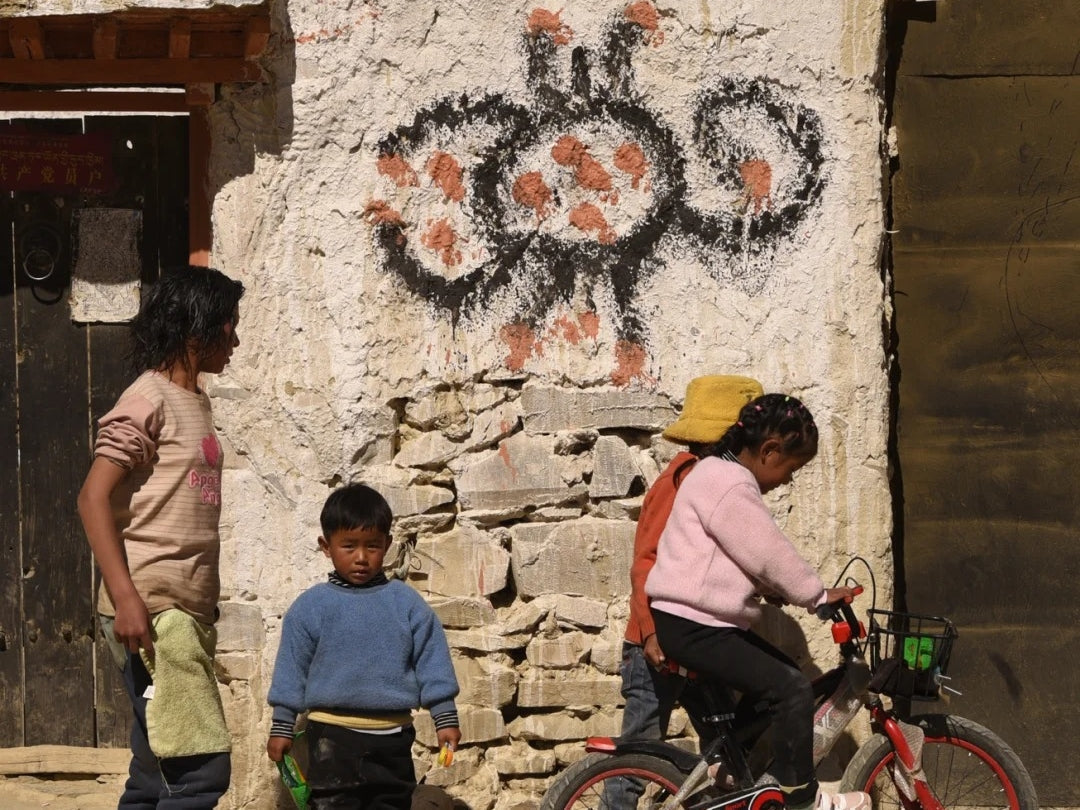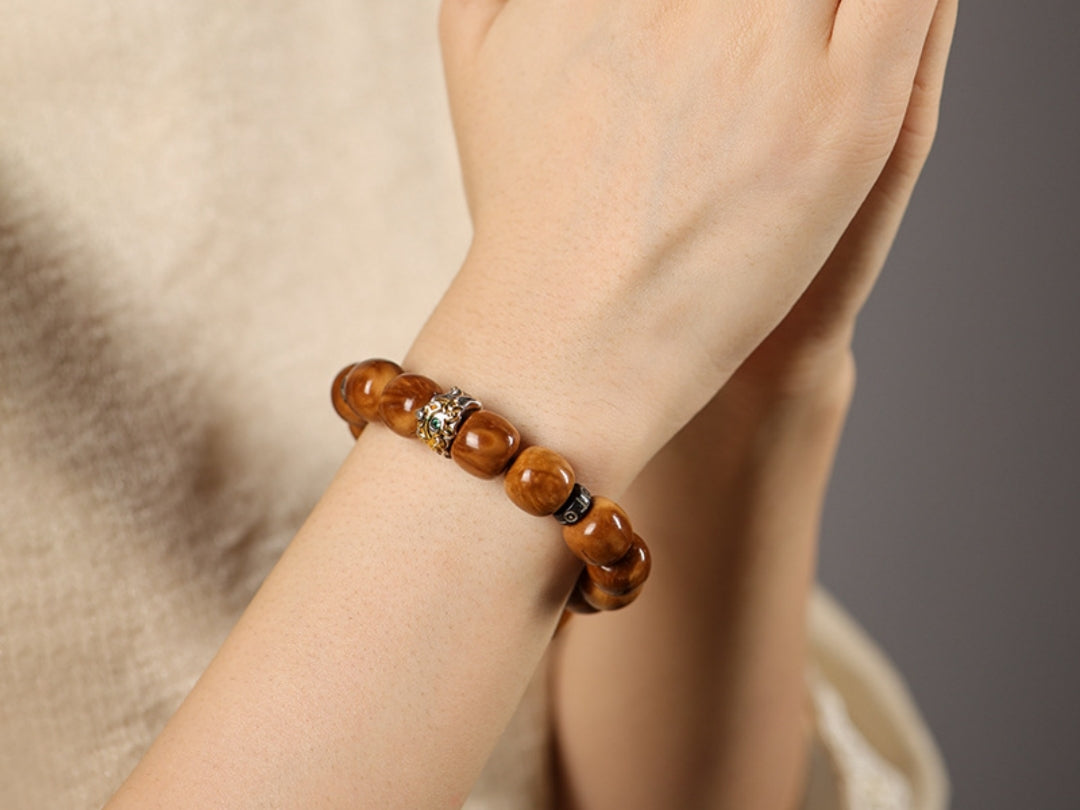Tibetan Buddhist jewelry is more than adornment—it’s a visual language of faith, philosophy, and lineage. Across the Himalayas, the Nyingma, Kagyu, and Gelug traditions have cultivated distinct artistic identities, reflecting their spiritual priorities through sacred symbols, materials, and craftsmanship. Let’s explore how these schools shape jewelry design, from ritual daggers to scholar-inspired motifs, and what these differences mean for modern seekers.

1. Nyingma: The Ancient Ones’ Mystical Arsenal
As the oldest school, Nyingma (founded in the 8th century) preserves esoteric practices tied to Padmasambhava, the “Lotus-Born” guru. Their jewelry often embodies primal energy and ritual power:
-
Phurba Daggers: Triple-edged ritual daggers, symbolizing the piercing of ignorance, are central to Nyingma iconography. Modern pendants replicate their intricate carvings, often in oxidized silver for an antique feel14.
-
Skull Imagery: Adornments featuring skulls (representing impermanence) and wrathful deities like Ekajati emphasize protection and transformation.
-
Materials: Darker metals and rudraksha seeds reflect Nyingma’s connection to earthy, tantric practices.
Nyingma pieces feel raw and mystical—ideal for those drawn to shadow work or deep meditation.
2. Kagyu: The Yogis’ Portable Altars
The Kagyu school, known for its emphasis on meditation and oral transmission, favors jewelry that supports mindful practice:
-
Mala Beads: Kagyu malas often use bodhi seeds or sandalwood, materials believed to enhance focus during mantra recitation. The 108-bead count, a staple across Buddhism, here emphasizes the Mahamudra (“Great Seal”) path24.
-
Om Mani Padme Hum: This mantra, engraved on rings or pendants, reflects Kagyu’s devotion to Chenrezig (Avalokiteshvara), the Bodhisattva of Compassion.
-
Natural Simplicity: Unpolished turquoise and coral nod to Kagyu’s roots in nomadic cultures, where jewelry doubled as spiritual armor.
Kagyu designs balance functionality and symbolism, mirroring the school’s pragmatic approach to enlightenment.
3. Gelug: The Scholars’ Symbolic Code
The Gelug school, dominant in central Tibet and led historically by the Dalai Lama, prioritizes scholarship and discipline. Its jewelry exudes order and intellectual rigor:
-
Endless Knots: Representing interwoven wisdom and compassion, these geometric motifs dominate Gelug pendants and bracelets, often in precise gold or silver filigree14.
-
Book & Sword Motifs: Manjushri’s flaming sword (wisdom) and sacred texts (knowledge) are common, reflecting Gelug’s scholarly ethos.
-
Lapis Lazuli & Gold: These materials, associated with clarity and purity, align with Gelug’s structured approach to learning.
Gelug jewelry appeals to analytical minds seeking harmony between study and spirituality.
Shared Threads: Universal Symbols Across Schools
While each school has distinct aesthetics, shared symbols unite them:
-
The Lotus: Purity emerging from chaos, used in all traditions but styled differently (e.g., Nyingma’s bold carvings vs. Gelug’s delicate inlays).
-
Eight Auspicious Symbols: From the Treasure Vase to the Victory Banner, these appear universally but vary in prominence—Kagyu might prioritize the Conch Shell (teaching), while Gelug emphasizes the Dharma Wheel (knowledge)2.
Modern Adaptations: Bridging Ancient & Everyday
Contemporary Tibetan jewelry blends these traditions with modern needs:
-
Nyingma-Inspired Cuffs: Oxidized silver cuffs with etched mantras cater to bold, mystical tastes.
-
Kagyu Meditation Malas: Adjustable sandalwood bracelets transition from yoga studios to offices.
-
Gelug Scholar Rings: Minimalist gold bands with endless knots appeal to professionals seeking subtle symbolism.
Choosing Your Tradition: Questions to Ask
-
What’s Your Spiritual Focus?
-
Material Preferences: Dark metals (Nyingma), natural stones (Kagyu), or refined metals (Gelug).
-
Lifestyle Fit: Bold statement pieces vs. subtle daily wear.
The Takeaway: Jewelry as a Mirror of the Path
Tibetan Buddhist jewelry isn’t monolithic—it’s a mosaic of philosophies. Whether drawn to Nyingma’s primal energy, Kagyu’s meditative simplicity, or Gelug’s scholarly precision, your choice becomes a tactile reminder of the path you walk. As the Dalai Lama (Gelug’s foremost figure) teaches: “Knowledge without compassion is useless; compassion without knowledge is unstable.” Let your jewelry reflect both.




